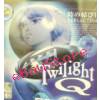
31Dec2025 - 06:44 17 PM
Japan Anime
Only yesterday岁月的童话
Code : 6772105110048
| Price : | |
| Weight : | 100 g |
| Genre : | Boy Series Animation , |
| Subtitle : | Chinese , English , |
| Language : | Cantonese , Japanese , |
| Video Format : | NTSC , |
| Discs : | 1 |
| Region Code : | ALL , |
| Model : | DVD , |
Taeko is 27, unmarried, has lived her whole life in Tokyo and now works at a company there. She decides to take another trip to visit her elder sister's in-laws in the rural countryside to help with the safflower harvest and get away from city life. While traveling at night on a train to Yamagata, she begins to recall memories of herself as a fifth-grade schoolgirl in 1966, and her intense desire to go on holiday like her classmates. During her stay in Yamagata, she finds herself increasingly nostalgic and wistful for her childhood self, while simultaneously wrestling with adult issues of career and love. The trip dredges up forgotten memories, the first stirrings of childish romance, puberty and growing up, the frustrations of math and boys. In lyrical switches between the present and the past, Taeko wonders if she has been true to the dreams of her childhood self.While mostly realistic in its depiction of Taeko, the expressionistic influences in Takahata's work are often marked by scenes where a character's imagination comes to life on screen. After Taeko encounters her first love, she dreams of rising from her bed into a red-colored sky. The scene ends with her slow return to earth, then cuts to an outside shot of her house where a giant heart emerges from her window. These expressionistic sequences run counter to Takahata's realistic storyline, but are consciously used by the director to transition back and forth from reality to the unreal world of animated fantasy, leveraging the advantages of animation in order to develop the character.
白领丽人妙子决定离开东京闹市到宁静怡人的乡间探亲。途上,陪伴她的是一连串的童年回忆,一宗宗小学时代对她影响深远的往事。现实生活中的妙子,渴望为繁嚣的都是生活带来转变,当她来到了农舍,遇上一个热心的农夫,深深地被对方吸引着,这是否意味着她正站在生活的转捩点上,需在繁华与朴实之间做出抉择。。。。。
白领丽人妙子决定离开东京闹市到宁静怡人的乡间探亲。途上,陪伴她的是一连串的童年回忆,一宗宗小学时代对她影响深远的往事。现实生活中的妙子,渴望为繁嚣的都是生活带来转变,当她来到了农舍,遇上一个热心的农夫,深深地被对方吸引着,这是否意味着她正站在生活的转捩点上,需在繁华与朴实之间做出抉择。。。。。






















